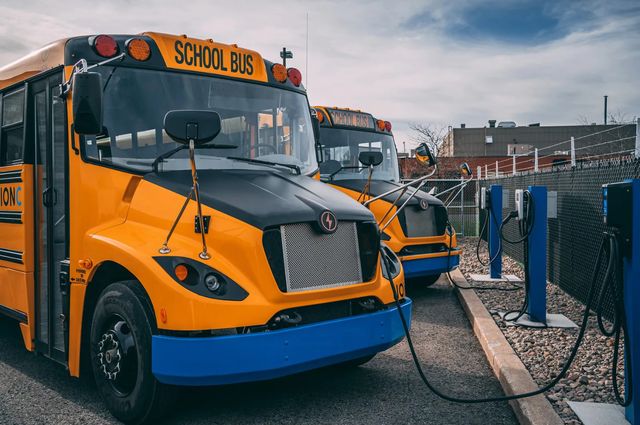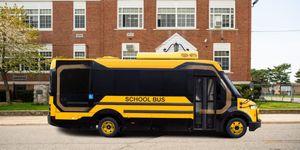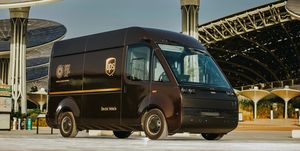- The White House and the EPA roll out rebate program for school district purchases of electric school buses, with a total of $5 billion set aside.
- The program will prioritize high-need school districts, offering $500 million in rebates this year alone.
- While school buses are well-suited for using electric drivetrains, due to their limited mileage each 24-hour cycle, the process of replacing all diesel buses is expected to take well over a decade.
Postal vehicles have most likely missed their chance to become electric with the next generation, as the USPS picked Oshkosh Defense's model for the next standard mail carrier vehicle model.
But what will be the fate of school buses? As an environmental concern, school buses are known for producing thick clouds of diesel smoke, but the issue is also far more complex when it comes to fleet plans.
While there are several electric school bus models available currently, with a number of school districts purchasing a few here and there, the rate of electric school bus adoption still looks like it will be happening on a time scale similar to the slow evolution of school bus designs. And unlike USPS vehicles, school buses are not a centrally controlled item at all, as it's up to individual school districts to make purchase decisions.
One mechanism that could speed up electric bus adoption is identical to what has been offered for electric cars: Rebates.
The EPA has rolled out the Clean School Bus program this month, an element of the Biden Administration's Bipartisan Infrastructure Law that will enact a rebate program for school district purchases of zero-emission buses, funded with $5 billion.
The selection process will be based on a lottery system, with the first $500 million due to be distributed this year as part of the first round of funding. The EPA will also prioritize applications from school districts in underserved communities.
"The Bipartisan Infrastructure Law of 2021 includes prioritization for some Clean School Bus applicants like high-need school districts," the EPA announced this week. "Applicants requesting funding for the replacement of school buses that serve a prioritized school district will be offered more funding per bus and receive preference in the selection process."
The agency opened the application process a few days ago for this round of funding, with the application window set to close Aug. 19 of this year.
School buses are one type of transportation that appears to be especially well-suited for going electric, as each bus has a set daily schedule and mileage, as well as at least ten hours of downtime between the end of each afternoon run and the following morning, allowing for a set recharge schedule overnight. School buses also don't generally need a range of over 150 miles on a full charge, as most routes don't exceed this mileage in a 24-hour cycle.
"This funding is a historic opportunity to reduce emissions from our nation’s school bus fleet, advance electric bus technologies and help protect our children from harmful diesel pollution while also helping the climate by reducing greenhouse gas emissions," said EPA Pacific Southwest Regional Administrator Martha Guzman. "School districts in the Pacific Southwest are highly encouraged to apply to the BIL Clean School Bus Program."
Even with this program it will still take years, if not decades, for all school buses in the country to be replaced with electric models. This could be a situation where an EV powertrain retrofit program for common types of buses could make sense, given the fact that school buses typically have long operational lives before they need replacement. It's unclear whether the federal program would fund a school district wanting to pursue such a retrofit, but it hinges on bus manufacturers developing such technology and making it commercially available.



















